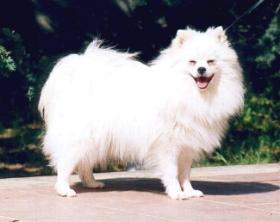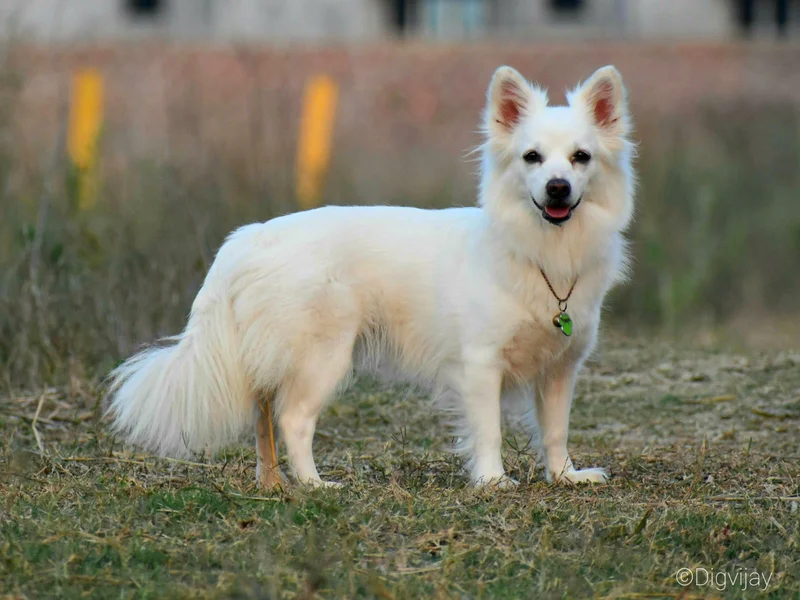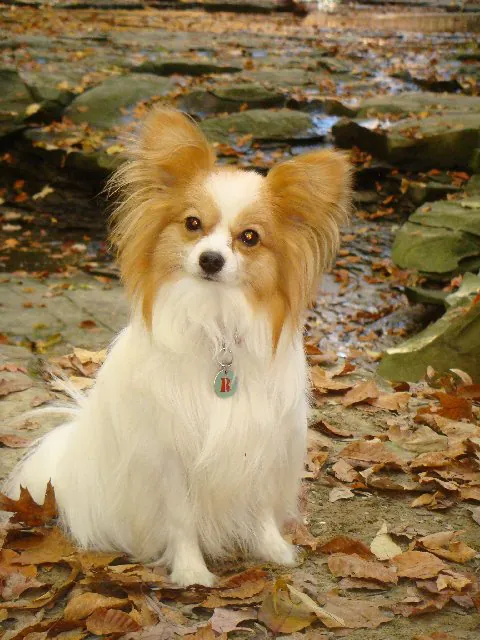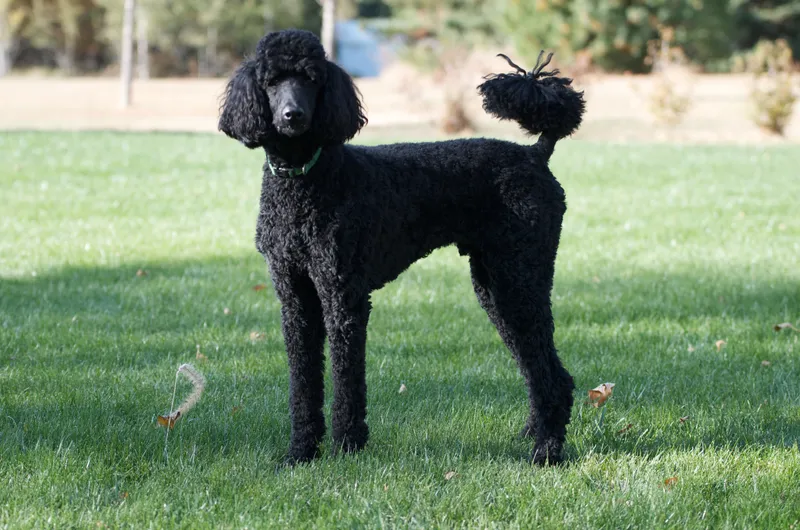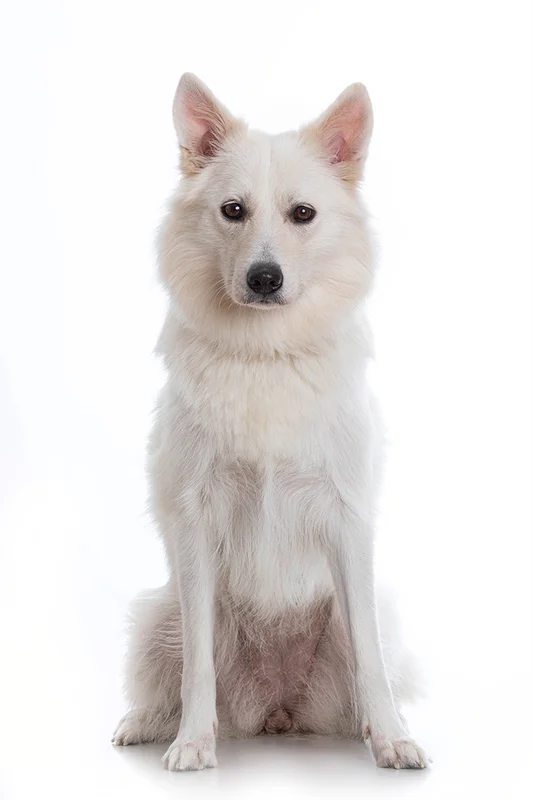Japanese Spitz
The Japanese Spitz is a charming companion dog known for its fluffy white coat, playful personality, and loyalty. Ideal for families, they thrive on human interaction and are relatively low-maintenance in grooming.
Overview
🐕Breed Overview
✨Key Traits
💡What Makes Japanese Spitz Special
One of the standout traits of the Japanese Spitz is its loyalty to its family. They are known to be very protective, often alerting their owners to any unusual activity.
Their playful nature means they enjoy games and activities, making them great companions for children. The breed's intelligence allows them to learn commands quickly, and they thrive on mental stimulation.
Their unique appearance, with a fluffy white coat and expressive dark eyes, adds to their charm, making them a favorite among dog lovers.
The Japanese Spitz is a charming and lively companion dog that has captured the hearts of many dog lovers around the world. With its striking white coat and playful demeanor, this breed is not only visually appealing but also possesses a delightful personality. Developed in Japan during the 1920s and 1930s, the Japanese Spitz was created by crossbreeding various spitz-type dogs, including the white German Spitz.
This breed stands out for its loyalty, intelligence, and affectionate nature, making it an ideal family pet. In terms of appearance, the Japanese Spitz is a small to medium-sized dog, typically measuring between 12 to 15 inches at the shoulder. Its thick double coat is pure white, with a soft undercoat and a longer outer coat that gives it a fluffy appearance.
The breed's wedge-shaped head, pointed ears, and dark, expressive eyes contribute to its endearing look. Despite their fluffy appearance, Japanese Spitz dogs are relatively low-maintenance when it comes to grooming, as their coat has a non-stick texture that repels dirt and mud. The Japanese Spitz is known for its playful and energetic personality.
They thrive on human interaction and enjoy being part of family activities. Their friendly nature makes them excellent companions for children and adults alike. While they can act as effective watchdogs, alerting their families to strangers, they are primarily companion dogs that prefer to be close to their owners.
Regular exercise is essential to keep them happy and healthy, with daily walks and playtime being crucial for their well-being. Health-wise, the Japanese Spitz is generally a robust breed, with a lifespan of 10 to 16 years. However, potential owners should be aware of common health concerns, such as patellar luxation and runny eyes.
With proper care, including regular vet check-ups and a balanced diet, the Japanese Spitz can lead a long and fulfilling life. In summary, the Japanese Spitz is a delightful breed that combines beauty, intelligence, and a loving temperament. Whether you're looking for a loyal companion or a playful family pet, the Japanese Spitz is sure to bring joy and happiness to your home.
🎉Fun Facts
Japanese Spitz dogs are very clean and do not have a doggy odor, making them great indoor companions.
The Japanese Spitz is often mistaken for a Pomeranian due to its fluffy white coat, but it is a distinct breed with its own history.
They are known for their playful antics and can be quite entertaining, often performing tricks for their owners.
Breed Characteristics
Family & Friends
Good Behavior
Get Up & Go
Household Harmony
Temperament & Personality
✨Key Traits
🐕Core Temperament
The Japanese Spitz has a warm and friendly temperament, characterized by its loyalty and affection towards family members. They are playful and energetic, enjoying interactive playtime and outdoor activities.
This breed is generally good with children and other pets, making them an excellent choice for families. Their alertness and protective instincts mean they will bark to alert their owners of any potential threats, but they are not aggressive.
With proper training and socialization, they can be well-mannered and adaptable to various living situations.
💫Personality Profile
The Japanese Spitz is a friendly and affectionate breed that thrives on human interaction. They are known for their playful nature and enjoy being involved in family activities.
This breed is intelligent and eager to learn, making training a rewarding experience. They are generally good with children and other pets, displaying a gentle and loving demeanor.
While they can be alert and protective, they are not aggressive, making them excellent companions for families. Their playful spirit and loyalty make them a joy to have around, and they often form strong bonds with their owners.
🔊Vocal Tendencies
The Japanese Spitz is known for its vocal nature, often barking to alert its owners of strangers or unusual sounds. While they are not excessively noisy, their tendency to bark can be managed with proper training and socialization.
They may bark when excited, during play, or when they feel their family needs protection. Their alertness makes them effective watchdogs, but owners should be mindful of excessive barking and work on commands to control this behavior.
Affection & Social Traits
Energy & Activity
Communication Style
Care Requirements
🏃♂️Exercise Requirements
Daily Exercise
The Japanese Spitz is an active breed that requires regular exercise to maintain its physical and mental well-being. Ideally, they need about 30 to 60 minutes of exercise daily, which can be broken down into multiple sessions throughout the day.
Activities such as brisk walks, playtime in a secure yard, and interactive games like fetch or agility training are excellent for this breed. Puppies may require shorter, more frequent play sessions to accommodate their developing bodies, while senior dogs may benefit from gentler activities to avoid strain.
Regular exercise helps prevent obesity, supports cardiovascular health, and reduces behavioral issues stemming from pent-up energy. Insufficient exercise can lead to weight gain, anxiety, and destructive behaviors, making it crucial for owners to prioritize daily activity.
Preferred Activities
🏠Living & Adaptability
Space Requirements
The Japanese Spitz is adaptable to various living environments, including apartments and houses. However, they thrive best in homes with access to outdoor space where they can run and play.
A small yard or nearby park is ideal for their exercise needs. In smaller living spaces, owners should ensure daily walks and playtime to keep the dog engaged.
The breed's size and energy level mean they can adapt well to apartment living, provided they receive adequate exercise and mental stimulation. Lack of space can lead to boredom and anxiety, so it's essential to create a stimulating environment for them.
Climate Preference
🍲Feeding Guide
Schedule
Food Types
Portion Size
Special Nutritional Needs
The Japanese Spitz does not have any specific dietary restrictions, but it is essential to provide a balanced diet rich in protein, vitamins, and minerals. Some dogs may have sensitivities to certain ingredients, so monitoring their reactions to new foods is advisable. Regular vet check-ups can help determine any special dietary needs as they age.
✨Grooming Requirements
Grooming Overview
The Japanese Spitz has a beautiful double coat that requires regular grooming to keep it in top condition. Despite its fluffy appearance, the coat is relatively low-maintenance due to its non-stick texture, which helps repel dirt and mud.
Owners should brush their Japanese Spitz at least twice a week using a pin brush to reach the undercoat and prevent matting. During shedding season, which occurs once a year, more frequent brushing may be necessary to manage loose fur.
Bathing should be done sparingly, ideally no more than once every two months, to avoid stripping the coat of its natural oils. Regular grooming not only keeps the coat looking its best but also provides an opportunity to check for any skin issues or parasites.
Care Schedule
Brush twice a week; bathe every two months; trim nails every two weeks.
Health Profile
⚕️Health Care
Regular veterinary care is essential for maintaining the health and longevity of the Japanese Spitz. Routine check-ups, vaccinations, and preventive treatments for parasites are crucial.
Early detection of health issues can lead to more effective treatment and management. Owners should also monitor their dog's weight and diet, as obesity can lead to various health problems, including joint issues and diabetes.
Health Issues Overview
⏳Average Lifespan
Genetic Factors
Genetics play a significant role in the lifespan of the Japanese Spitz. While they are generally healthy, certain hereditary conditions, such as patellar luxation, can affect their quality of life.
Responsible breeding practices that prioritize genetic diversity and health testing can help reduce the risk of inherited health issues. Potential owners should seek reputable breeders who conduct health screenings and provide health guarantees for their puppies.
Living Conditions
The Japanese Spitz thrives in environments where they can interact with their families and have access to outdoor spaces for exercise. Living in a warm climate is preferable, but they can adapt to colder conditions as long as they have shelter.
Regular social interaction and mental stimulation are crucial for their happiness and longevity. Dogs that are left alone for extended periods may experience anxiety and behavioral issues, which can negatively impact their lifespan.
🏥Common Health Issues
Patellar Luxation
Warning Signs
🔬Diagnosis
Veterinarians typically diagnose patellar luxation through physical examination and observation of the dog's gait.
💊Treatment
Treatment options may include physical therapy, medication, or surgery in severe cases.
📝Management Tips
Maintain a healthy weight to reduce stress on the joints, and consult a veterinarian for treatment options if symptoms arise.
Runny Eyes
Warning Signs
🔬Diagnosis
Diagnosis is usually made through observation and examination of the dog's eyes.
💊Treatment
Treatment may involve eye drops or addressing underlying allergies.
📝Management Tips
Keep the eye area clean and consult a vet if the condition persists or worsens.
🛡️Preventive Care
🔬Hip Evaluation
A hip evaluation assesses the dog's hip joints for signs of dysplasia or other abnormalities, which can lead to mobility issues.
📅 Recommended annually for adult dogs.
🔬Patellar Luxation Assessment
This test checks for patellar luxation, a common issue in small breeds, ensuring that the kneecaps are properly positioned.
📅 Recommended annually for adult dogs.
🔬Ophthalmic Examination
Eye examinations can help detect any hereditary eye conditions early, allowing for timely intervention.
📅 Recommended every 1-2 years, or as advised by a veterinarian.
Training
🧠Intelligence & Trainability
💪Work Drive
The Japanese Spitz has a moderate work drive, enjoying tasks that involve interaction with their owners. They thrive on mental stimulation and enjoy activities that challenge their intelligence, such as puzzle toys and agility courses.
Engaging them in regular play and training sessions helps satisfy their need for mental engagement. Without sufficient stimulation, they may become bored and exhibit undesirable behaviors.
Owners should aim to provide a variety of activities to keep their Japanese Spitz mentally and physically active.
⚠️Training Considerations
While the Japanese Spitz is generally easy to train, some common challenges include their tendency to bark excessively if not properly managed. This behavior can stem from their natural watchdog instincts.
To mitigate this, owners should establish clear boundaries and commands, rewarding quiet behavior and redirecting barking to appropriate situations. Additionally, socialization is crucial; without exposure to various environments and people, they may become overly protective or anxious.
Consistent training and positive reinforcement techniques are essential to address these challenges effectively.
📝Training Tips
Training a Japanese Spitz can be a rewarding experience, as they are intelligent and eager to please. Positive reinforcement methods, such as treats and praise, work best for this breed.
Start with basic commands like 'sit,' 'stay,' and 'come,' gradually introducing more complex tasks. Socialization should begin early, exposing them to different people, pets, and environments to foster a well-rounded temperament.
Regular training sessions should be kept short and engaging to maintain their interest. Incorporating fun activities like agility training can also enhance their learning experience and strengthen the bond between dog and owner.
History & Heritage
📜Origin Story
The Japanese Spitz's origins trace back to the 1920s when breeders in Japan sought to create a companion dog that combined the best traits of various spitz breeds. The initial breeding involved white German Spitz dogs, which were brought to Japan from northeastern China.
Over the years, additional small white spitz breeds were introduced to enhance the breed's characteristics. The Japanese Spitz was first showcased at a dog show in Tokyo in 1921, marking the beginning of its journey to recognition.
By the 1950s, the breed gained significant popularity in Japan, leading to its export to other countries, including Sweden and England, where it was officially recognized by the Kennel Club in 1977. Today, the Japanese Spitz is cherished worldwide for its friendly disposition and striking appearance.
⏳Development History
The Japanese Spitz was developed in Japan during the 1920s and 1930s through the crossbreeding of various spitz-type dogs, including the white German Spitz. The breed was first exhibited in Tokyo in 1921, and its popularity grew throughout the 1950s.
The final breed standard was established post-World War II, and the breed was recognized by the Japan Kennel Club. Despite its similarities to other breeds like the American Eskimo Dog and the Pomeranian, the Japanese Spitz has carved out its niche as a distinct breed, recognized by many kennel clubs worldwide, except the American Kennel Club.
🛡️Purpose & Historical Role
Originally bred as a companion dog, the Japanese Spitz has also served as a reliable watchdog. Its alertness and tendency to bark at strangers make it an effective guardian for families.
Over time, the breed has evolved primarily into a family pet, known for its affectionate nature and loyalty. The Japanese Spitz excels in various roles, including therapy and agility, showcasing its versatility as a companion animal.
🏺Cultural Significance
The Japanese Spitz has gained popularity not only in Japan but also internationally, becoming a beloved companion dog in many households. Its friendly demeanor and striking appearance have made it a favorite among families and individuals alike.
The breed's presence in popular culture, including social media and celebrity ownership, has further enhanced its appeal. The Japanese Spitz symbolizes loyalty and companionship, often being seen as a perfect family pet due to its affectionate nature and adaptability to various living situations.
Conservation Status
This breed is well-established with healthy population numbers.
